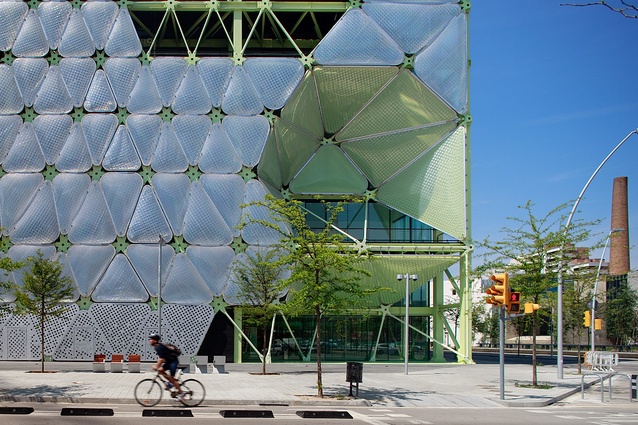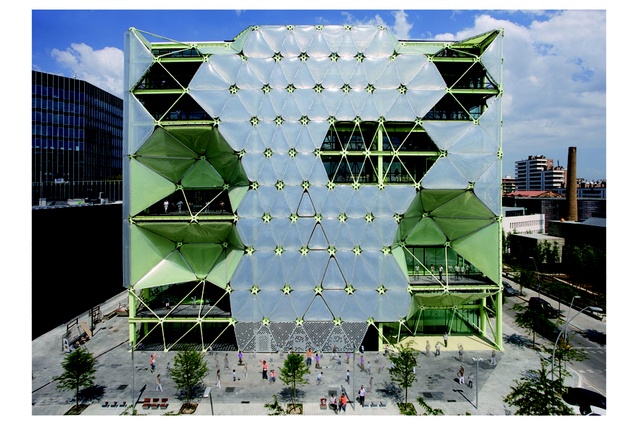Media-TIC wins World Building of the Year 2011
The Media-TIC building designed by Spanish architects ‘Cloud 9’ has been named World Building of the Year 2011 at the World Architecture Festival (WAF) in Barcelona - the largest global celebration of architecture.
Commissioned by The Consortium of the Zona Franca CZFB and @22Barcelona, an ‘experimental district in the city’, the Media-TIC provides a mix of large office spaces, smaller spaces for emerging companies and public rooms for hosting courses and programmes for city residents.
The architects were interested in the digital city model based on information, communication and technology, with the idea of a city where what matters is knowledge, added value and patents.
WAF Programme Director, Paul Finch applauded the project for the scale and degree of difficulty of its ambition. He said, it’s “a symbol of an emerging movement in the city of Barcelona”.
The WAF super jury led by Michael Sorkin, Principal of the Michael Sorkin Studio, New York also praised the building for its excellent green credentials.
Cloud 9 architects said, “our construction is built from the top and moves downwards, becoming transparent, anti-gravitational, and almost liquid at the bottom. Thus, its impact on the street is minimal, about 8 percent mass with respect to the 1500 m2 floor surface area. Unlike most of the buildings, which consume huge amounts of energy, the Media-TIC is designed to be a great generator and optimizes energy use.”
“Thanks to the energy simulation of the building the demands of heat and cold are adjusted accordingly minimizing the dimensioning of installations. The façade, made of inflatable ETFE cushions oriented south, act as a variable sunscreen, opening in winter to gain solar energy, and closing in summer to protect and shade. In the south west façade, Nitrogen based fog is introduced in the cushions, that by increasing its particles greater opacity is produced, thereby protecting users. Both the façades and offices have been equipped with multiple temperature sensors, humidity or pressure that collect exterior information to adjust the interior conditions.”
World Building of the Year 2011 was selected from 16 finalist projects, from a total of 700 submissions. Other WAF Award winners are below:
WAF ‘Future Project of the Year Award 2011’
Hanimaadaoo International Airport, Maldives, designed by Integrated Design Associates Limited, Hong Kong The new airport, designated as the country’s second international gateway, is located on an island with very limited land mass for an international airport of this size. With airfield infrastructure consuming nearly all the available land the concept of a “floating terminal” has been selected by the Maldivian Government for its innovative, exciting and eco-friendly approach. The proposed terminal is built entirely on stilts over water without reclamation to preserve the existing environment and the natural coastline.
WAF ‘Structural Project of the Year 2011’
Beekman Tower, designed by renowned architect Frank Gehry, is New York City’s tallest residential tower. Located in the middle of the block bounded by Nassau, Beekman, Spruce and Gold Streets, just south of the Brooklyn Bridge, the 1.1 million SF mixed-use building has redefined the skyline of Downtown Manhattan. It is a reinforced concrete building and the structure is composed of cast-in-place, concrete flat plate floors supported by reinforced concrete columns and shear walls. The 5 to 6 ft deep mat foundation is supported on 18” diameter concrete encased steel piles and also various capacity drilled caissons adjacent to an MTA subway tunnel.











